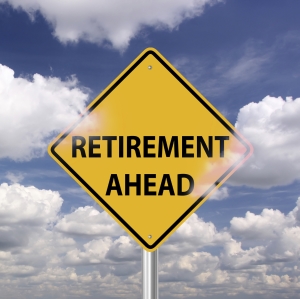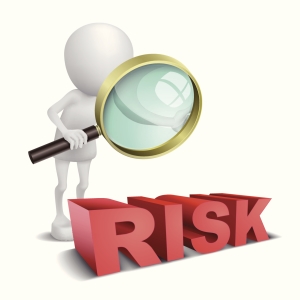Paying the Bills: Potential Sources of Retirement Income
Paying the Bills: Potential Sources of Retirement Income
WRITTEN BY JOHN N. KALIL JR., LUTCF

Planning your retirement income is like putting together a puzzle with many different pieces. One of the first steps in the process is to identify all potential income sources and estimate how much you can expect each one to provide.
Social Security
The vast majority of people aged 65 or older receive Social Security benefits. However, most retirees also rely on other sources of income.
For a rough estimate of the annual benefit to which you would be entitled at various retirement ages, you can use the calculator on the Social Security website, www.ssa.gov. Your Social Security retirement benefit is calculated using a formula that takes into account your 35 highest earnings years. How much you receive ultimately depends on a number of factors, including when you start taking benefits. You can begin doing so as early as age 62. However, your benefit may be approximately 25% to 30% less than if you waited until full retirement age (66 to 67, depending on the year you were born). Benefits increase each year that you delay taking benefits until you reach age 70.
As you're planning, remember that the question of how Social Security will meet its long-term obligations to both baby boomers and later generations has become a hot topic of discussion. Concerns about the system's solvency indicate that there's likely to be a change in how those benefits are funded, administered, and/or taxed over the next 20 or 30 years. That may introduce additional uncertainty about Social Security's role as part of your overall long-term retirement income picture, and put additional emphasis on other potential income sources.
Pensions
If you are entitled to receive a traditional pension, you're lucky; fewer Americans are covered by them every year. Be aware that even if you expect pension payments, many companies are changing their plan provisions. Ask your employer if your pension will increase with inflation, and if so, how that increase is calculated.
Your pension will most likely be offered as either a single or a joint and survivor annuity. A single annuity provides benefits until the worker's death; a joint and survivor annuity provides reduced benefits that last until the survivor's death. The law requires married couples to take a joint and survivor annuity unless the spouse signs away those rights. Consider rejecting it only if the surviving spouse will have income that equals at least 75% of the current joint income. Be sure to fully plan your retirement budget before you make this decision.
Work or other income-producing activities
Many retirees plan to work for at least a while in their retirement years at part-time work, a fulfilling second career, or consulting or freelance assignments. Obviously, while you're continuing to earn, you'll rely less on your savings, leaving more to accumulate for the future. Work also may provide access to affordable health care.
Be aware that if you're receiving Social Security benefits before you reach your full retirement age, earned income may affect the amount of your benefit payments until you do reach full retirement age.
If you're covered by a pension plan, you may be able to retire, then seek work elsewhere. This way, you might be able to receive both your new salary and your pension benefit from your previous employer at the same time. Also, some employers have begun to offer phased retirement programs, which allow you to receive all or part of your pension benefit once you've reached retirement age, while you continue to work part-time for the same employer.
Other possible resources include rental property income and royalties from existing assets, such as intellectual property.
Retirement savings/investments
Until now, you may have been saving through retirement accounts such as IRAs, 401(k)s, or other tax-advantaged plans, as well as in taxable accounts.
Your challenge now is to convert your savings into ongoing income. There are many ways to do that, including periodic withdrawals, choosing an annuity if available, increasing your allocation to income-generating investments, or using some combination. Make sure you understand the tax consequences before you act.
Some of the factors you'll need to consider when planning how to tap your retirement savings include:
- How much you can afford to withdraw each year without exhausting your nest egg. You'll need to take into account not only your projected expenses and other income sources, but also your asset allocation, your life expectancy, and whether you expect to use both principal and income, or income alone.
- The order in which you will tap various accounts. Tax considerations can affect which account you should use first, and which you should defer using.
- How you'll deal with required minimum distributions (RMDs) from certain tax-advantaged accounts. After age 72, if you withdraw less than your RMD, you'll pay a penalty tax equal to 50% of the amount you failed to withdraw.
Some investments, such as certain types of annuities, are designed to provide a guaranteed monthly income (subject to the financial strength and claims-paying ability of the issuer). Others may pay an amount that varies periodically, depending on how your investments perform. You also can choose to balance your investment choices to provide some of both types of income.
All investing involves risk, including the possible loss of principal, and there is no guarantee that any investment strategy will be successful.
Inheritance
An inheritance, whether anticipated or in hand, brings special challenges. If a potential inheritance has an impact on your anticipated retirement income, you might be able to help your parents investigate estate planning tools that can help reduce the impact of taxes on their estate. Your retirement income also may be affected by whether you hope to leave an inheritance for your loved ones. If you do, you may benefit from specialized financial guidance that can integrate your income needs with a future bequest.
Equity in your home or business
If you have built up substantial home equity, you may be able to tap it as a source of retirement income. Selling your home, then downsizing or buying in a lower-cost region, and investing that freed-up cash to produce income or to be used as needed is one possibility. Another is a reverse mortgage, which allows you to continue to live in your home while borrowing against its value. That loan and any accumulated interest is eventually repaid by the last surviving borrower when he or she eventually sells the home, permanently vacates the property, or dies. (However, you need to carefully consider the risks and costs before borrowing. A useful publication titled "Reverse Mortgages: Avoiding a Reversal of Fortune" is available online from the Financial Industry Regulatory Authority.)
If you're hoping to convert an existing business into retirement income, you may benefit from careful financial planning to help reduce the tax impact of a sale. Also, if you have partners, you'll likely need to make sure you have a buy-sell agreement that specifies what will happen to the business when you retire and how you'll be compensated for your interest.
With an expert to help you identify and analyze all your potential sources of retirement income, you may discover you have more options than you realize.
John N. Kalil, Jr., is a Registered Representative of Hazard & Siegel, Inc. Securities are offered through Hazard & Siegel Inc., 5793 Widewaters Parkway, Syracuse, New York 13214. Member FINRA/SIPC. Advisory Services are offered through Hazard & Siegel Advisory Services, LLC, an SEC Registered Investment Advisor.
Read more: Paying the Bills: Potential Sources of Retirement Income
- Hits: 867







